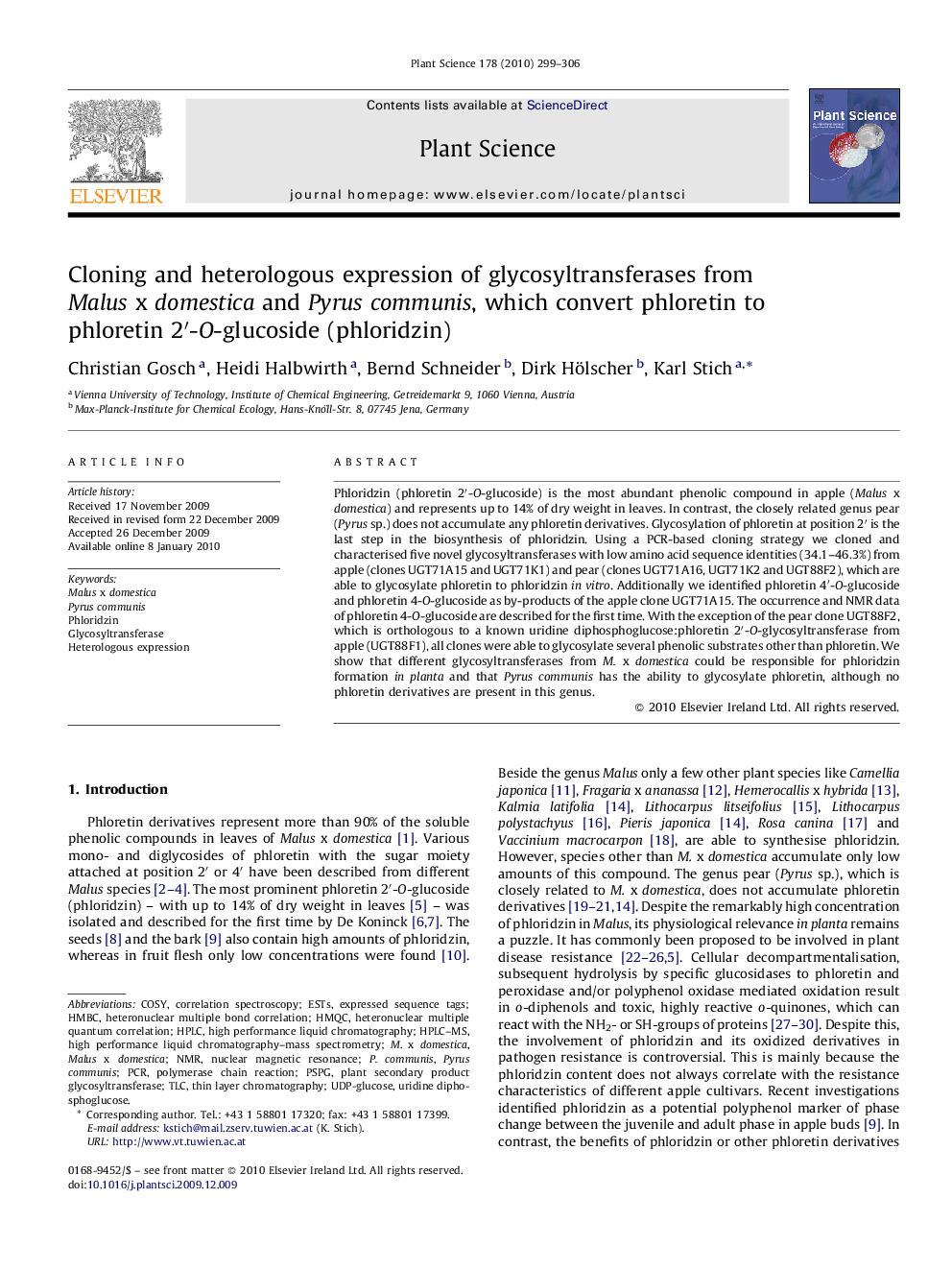| کد مقاله | کد نشریه | سال انتشار | مقاله انگلیسی | نسخه تمام متن |
|---|---|---|---|---|
| 2017654 | 1067810 | 2010 | 8 صفحه PDF | دانلود رایگان |

Phloridzin (phloretin 2′-O-glucoside) is the most abundant phenolic compound in apple (Malus x domestica) and represents up to 14% of dry weight in leaves. In contrast, the closely related genus pear (Pyrus sp.) does not accumulate any phloretin derivatives. Glycosylation of phloretin at position 2′ is the last step in the biosynthesis of phloridzin. Using a PCR-based cloning strategy we cloned and characterised five novel glycosyltransferases with low amino acid sequence identities (34.1–46.3%) from apple (clones UGT71A15 and UGT71K1) and pear (clones UGT71A16, UGT71K2 and UGT88F2), which are able to glycosylate phloretin to phloridzin in vitro. Additionally we identified phloretin 4′-O-glucoside and phloretin 4-O-glucoside as by-products of the apple clone UGT71A15. The occurrence and NMR data of phloretin 4-O-glucoside are described for the first time. With the exception of the pear clone UGT88F2, which is orthologous to a known uridine diphosphoglucose:phloretin 2′-O-glycosyltransferase from apple (UGT88F1), all clones were able to glycosylate several phenolic substrates other than phloretin. We show that different glycosyltransferases from M. x domestica could be responsible for phloridzin formation in planta and that Pyrus communis has the ability to glycosylate phloretin, although no phloretin derivatives are present in this genus.
Journal: Plant Science - Volume 178, Issue 3, March 2010, Pages 299–306